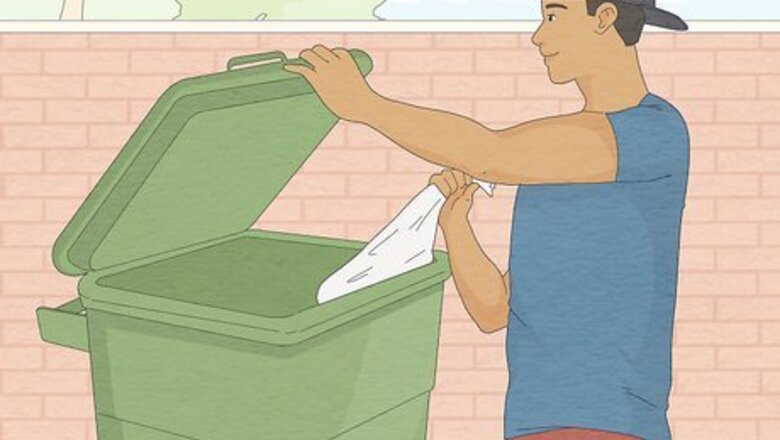
views
Handling Scavenging Gulls
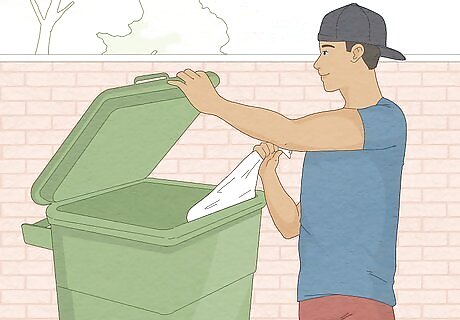
Dispose of garbage properly in lidded bins. This discourages seagulls from hanging around to scavenge out of trash bins. Always make sure the lids are on securely and don’t overfill a bin. If you have to put your garbage out in garbage bags, ask your local collection authority if they provide protective outer bags to prevent seagulls from tearing open your regular trash bags. Put your trash out as close to collection time as possible to limit the time it's exposed to wildlife.
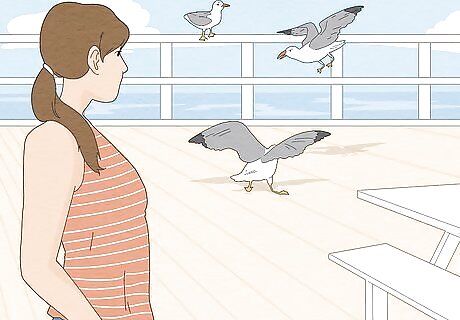
Scan the area for gulls before you sit down to eat outside. Look around for gulls perched on nearby posts, walls, and buildings. Take note of any gulls that appear to be watching the area and keep an eye on them or go somewhere else to eat. For example, if you’re eating on a seaside boardwalk, look at nearby railings and posts for gulls that seem like they’re waiting to scavenge food. Have a backup plan of where to move to if seagulls start coming towards you aggressively.
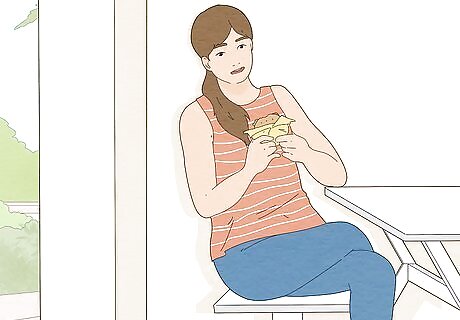
Sit against a wall or another surface if you’re eating outside. This lets you keep an eye on any gulls in the area in case they start approaching you in search of food. Avoid turning your back on gulls because you can’t see if they are approaching you. For example, if you’re dining at an outdoor cafe, pick a seat close to the wall of the cafe that faces outwards from the building.

Make eye contact with a gull if it walks towards you while you’re eating. Stare hard at any gull that starts coming closer to you on foot. Knowing that you’re watching them sometimes discourages gulls from testing their luck to try and steal your food. If this doesn’t work, try covering your food or moving it closer to you, or move to a different area to eat to get away from the aggressive gulls.
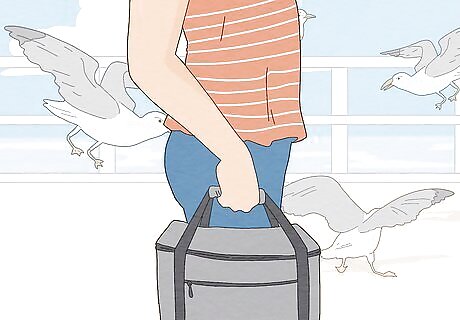
Keep any food you’re carrying hidden and covered when you’re walking by gulls. Carry food in closed containers inside a bag if possible and hold it close to your body, so that gulls are less likely to spot it and dive for it. Only open your food containers when you’re going to eat. For example, don’t walk around carrying an open box of fries. Cover them until you reach a place where you can sit down to eat them safely. If you have to carry something uncovered like an ice cream cone or a pastry, keep it close to your body instead of holding it outstretched in front of you.
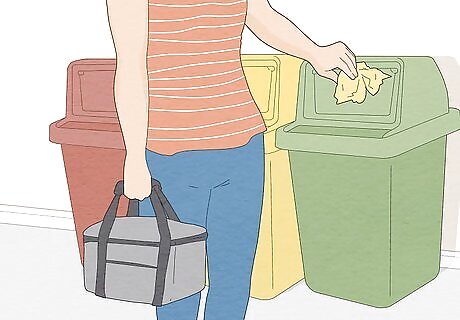
Dispose of food waste promptly and properly. Throw away food scraps and disposable food containers in the proper disposal bins as soon as you finish eating. Don’t litter or feed leftovers to seagulls. If you work in a cafe or restaurant with outdoor seating, clear leftovers and dishes from tables as soon as the guests leave to discourage gulls from coming to scavenge.
Protecting Against Nesting Gulls

Listen for a low-pitched, squawking sound as a warning of an attack. Gulls defending their nests and chicks make a warning sound to tell you to get away before they attack. Be aware of your surroundings when you’re walking through areas with gulls and listen for this sound. Since you’re probably not familiar with this specific sound, you might not notice it the first time. If you don’t notice the warning sound, the next step is for the gull to start swooping towards you without actually touching you. If you want to familiarize yourself with the warning sound, you might be able to find audio clips of it online. The breeding season for gulls is typically from March to September, so be especially cautious during this time.

Move away if you hear a warning squawk or if a gull starts swooping at you. Backtrack the way you came until you don’t hear the sound anymore or if the gull stops swooping. Find a different route that lets you avoid the nesting gulls. If you ignore the warnings, a gull may begin attacking you by swooping closer and scraping your head with its feet.

Lift up your arms to protect your head if a seagull begins swooping at you. Keep your arms above your head, but don’t wave them around. Move away from the area until the gull stops attacking you. Waving your arms around to try and fend off the seagull may just aggravate it more and make the attack worse. It’s best to just defend yourself and get out of there.
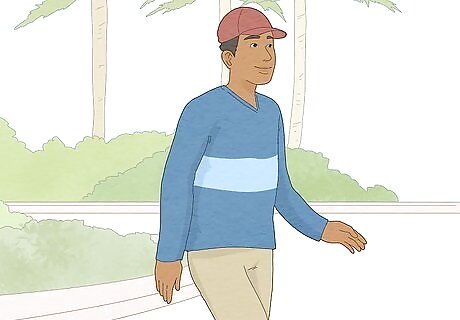
Wear a hat and carry an open umbrella if you can’t avoid aggressive gulls. In some cases, like if nesting gulls lives close to your front door, it might be impossible to avoid a gull that’s protective of its young. Put on a hat to protect your head and walk with an open umbrella, then use the umbrella as a shield if a gull starts getting aggressive with you. Seagull chicks take about 5-6 weeks to leave the nest, then the parents won’t be so aggressive. So, don’t worry, you won’t have to protect yourself this way forever.
Keeping Gulls off Your Property
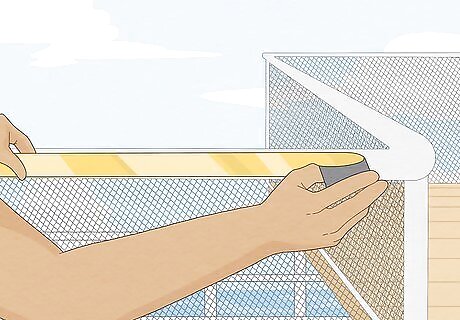
Use shiny materials to deter gulls. Hang up things like reflective tape or streamers in areas where you want to discourage gulls from hanging out. The reflective surfaces confuse them and they might decide to go somewhere else. Other ideas are to hang up old CDs using string or to rub a shiny gel called optical fire gel on surfaces.
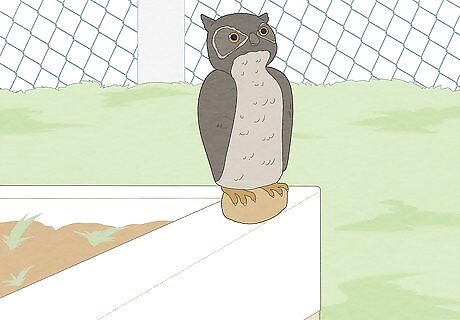
Set up decoys of gull predators like owls and hawks on your property. Tie balloons with owl faces or hang up owl masks around your property for example. Or, buy lawn ornaments like wooden owls or hawks and stick them in your lawn. Other examples of things that can scare gulls off are kites shaped like hawks and decoy coyotes.
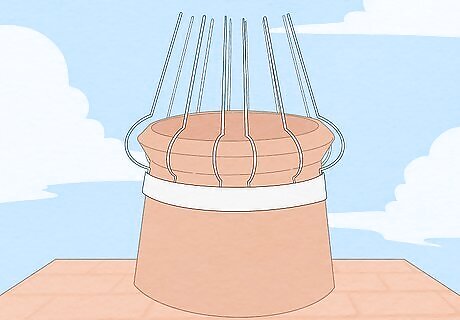
Install wires, spikes, and nets to keep gulls from perching on high points. Get plastic or metal spikes installed on chimneys and high points of your roof. Surround other areas you don’t wan’t gulls to hang out in with wires and nets to keep them from perching and nesting there. For example, get a long strip of spikes and run it across the whole peak of your roof to prevent gulls from sitting there.
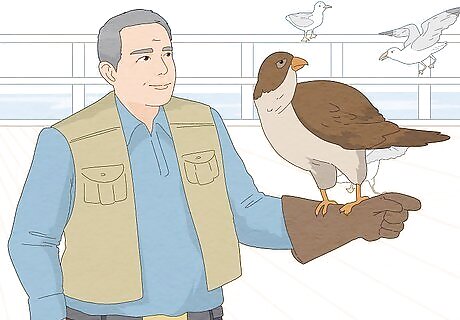
Hire a falconer to deploy a hawk or a falcon to scare off crowds of seagulls. Some falconers offer this service to reduce problematic crowds of gulls in areas that are overrun. Look up falconers in your area and contact them to find out if this is an option. Note that the hawk or falcon might kill a seagull if they don't scram fast enough. Keep in mind that the falconer will have to keep coming back to prevent gulls from returning, so it’s an ongoing service that you’ll have to pay for. The cost of this service might be somewhere around $55 an hour.















Comments
0 comment